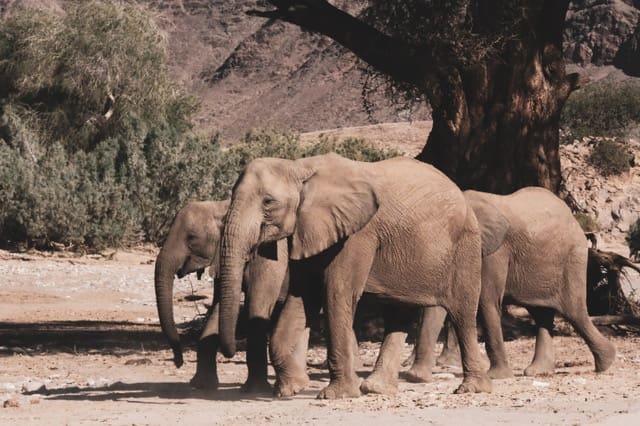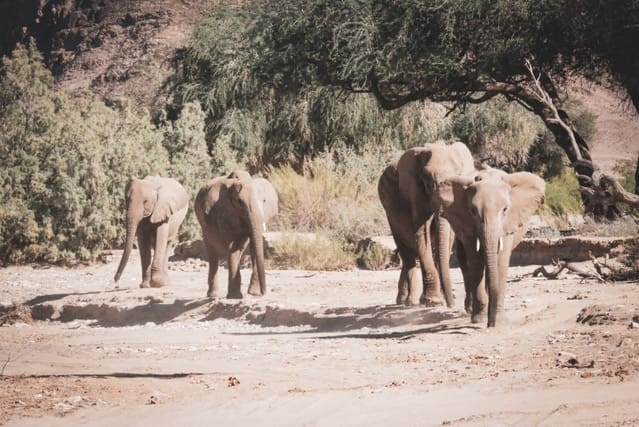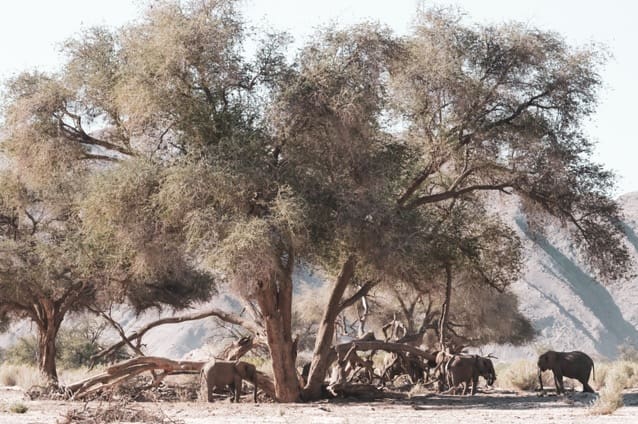The trophy hunting lobby group Safari Club International (SCI) attracted media attention in January. This was for auctioning off killing trips for a polar bear and numerous other wild animals at its Las Vegas convention. The coverage was based on a report by the Campaign to Ban Trophy Hunting. It noted that some of the funds raised from the sales will go towards fighting an impending UK ban on the import of body parts from slain wild animals.
Hunters are set to start the bidding on killing polar bears at a trophy hunting convention in Las Vegas.
Some of the funds raised will be used to help fight against the UK government’s attempt to ban the import of animal trophies.@alextomo reports. https://t.co/msq4WAeEKN
— Channel 4 News (@Channel4News) January 20, 2022
A government consultation in recent years overwhelmingly confirmed support among the public for a comprehensive ban on imports. It’s hard to imagine that SCI’s bloody auction will help the industry’s efforts to win over the UK public’s minds. In fact, the optics are terrible. But the industry started the year reeling from another blow dealt by an investigative report focused on elephants.
Undercover investigation
As The Canary has extensively reported, proponents of trophy hunting argue that it’s a ‘conservation tool’. These proponents include a number of conservationists. But there’s little consensus on trophy hunting’s conservation value among the sector as a whole.
Proponents argue that the practice protects species by providing an income to communities which co-exist with them. It supposedly incentivises people to preserve wild animals and the wild spaces in which they live. However, an investigative report released towards the end of 2021 challenges this claim.
Its findings are based on a two-month-long undercover investigation in Namibia. This country is arguably the poster child for so-called ‘sustainable use‘. This approach to conservation promotes people’s use of wildlife in a continual but theoretically sustainable way. It includes practices like trophy hunting, trading wild species and wildlife tourism.
The elephant in the dogma
Journalists Adam Cruise and Izzy Sasada undertook the investigation. Its purpose was to explore the effectiveness of Namibia’s Community-Based Natural Resource Management (CBNRM) model – particularly in relation to African elephants.
In the CBNRM model, communities manage nature within their designated areas, known as conservancies. This community management is “guided by policy directives of the government” and involves the use of nature to provide benefits for people. Trophy killing, wildlife tourism, and trading in wildlife all feature in the model.
The investigation focused on elephants due to their centrality, both in “an ecological sense” and in relation to the CBNRM model. Elephants are a keystone species, which means they’re a species that’s pivotal to the health and stability of an ecosystem. They’re of high-value within the Namibian system, both in terms of their draw as a tourist attraction and what others will pay to kill them. Elephants can also create problems – for instance by raiding crops – which can make them costly to co-exist with.

“A fabrication rather than a fact”
Cruise and Sasada spoke with multiple stakeholders in 29 out of the 86 conservancies within the CBNRM system. This included community members, hunting operators, and conservancy officials. They also crunched the numbers in terms of wildlife statistics and conservancy income. Based on all these sources and their on-the-ground experience, the report concluded that:
the perceived success of wildlife conservation and concomitant economic benefits for previously disadvantaged rural communities in Namibia is found to be predominantly a fabrication rather than a fact
The report asserted that the majority of people in conservancy communities within the three regions the investigators visited – Kunene, Otjozondjupa, and Zambezi – remain “as impoverished as ever, in many cases, more so”. It also cited the exploitation of minority groups as an issue, both by other ethnic groups and the government. San communities, for example, complained of unimpeded encroachment on their lands by other groups. They said this inhibits their ability to hunt for food or grow and harvest their own crops or wild-grown vegetation. The San are indigenous peoples of southern Africa.
In a conversation following the report’s publication, Cruise told The Canary that the conservancies are predominantly situated in areas where marginalised or minority groups reside. He also asserted that among marginalised people, women are faring worst and “really taking the brunt of this mess”.
Overall, the report presented a picture of a system that generally works for the few, but not the many. Propped up by international funding, the system maintains itself, looks after conservancy officials and staff like wildlife guards, and takes care of the core organisations engaged in advising and assisting conservancies. In terms of providing meaningful income and support to the wider conservancy members, however, the report suggests that the system is lacking.
Wildlife decline
The investigators also said that wildlife populations are declining sharply in the Kunene region of Namibia. The species here are adapted to its dry, desert conditions. They include elephants, lions, Hartmann’s mountain zebras, giraffes, black rhinos, and oryxes. According to the report, the annual wildlife counts show that:
most species have steadily declined in the past five years, with some species, like the oryx, now down to critically low levels.
It further warns that “the entire elephant population in the Kunene could be on the verge of collapse”, with its “extremely low numbers of breeding bulls and high infant mortality rate”. The report asserted that overall “wildlife numbers are declining” in the country.

Pushback
The report has attracted significant pushback. The Ministry of Environment, Forestry and Tourism (MEFT), members of the Namibian Chamber of Environment, and the Namibian Association of CBNRM Support Organisations (NACSO) wrote a scathing response to it. NACSO’s purpose is to connect “the communities and organisations that manage and conserve Namibia’s natural resources”. It’s deeply involved in the implementation of the CBNRM model. The association counts NGOs like WWF in Namibia among its members and many trophy hunting outfits among its partners.
In their response, these entities accused the report’s authors of using it to “attack trophy hunting”. They questioned the report’s “methodology” and its funding by wildlife- and animal rights-focused organisations. They also criticised the report’s presentation of data. And they further questioned how the investigators had selected people to speak to and whether they’d obtained “free, prior and informed consent” from interviewees. Essentially, they characterised the report as being scientifically unsound. Additionally, they asserted that the authors conducted the research illegally without permits or clearance to do so.
Further critiques came from conservancy officials. They said the report misrepresented their comments and presented their conservancies in a distorted way.
Negative impacts
Cruise, however, says that some of the criticism is based on a fundamental misunderstanding of the undertaking. It was, he said, a journalistic undercover investigation, not a scientific research project. He explained that he and Sasada “spoke to everybody that we came across”. And all those approached who weren’t part of or connected to conversancy management tended to “feel like they weren’t benefiting very well”. He also said the wealth disparity between individuals linked to management and those who aren’t is ‘palpable’.
The report acknowledged the money that trophy killing brings in for conservancies. It also noted which conservancies supported an open letter against trophy hunting import bans. Moreover, it highlighted a lack of objections to the practice among community members interviewed, such as the Ju/’hoansi San. But it spotlighted the apparently small proportion of this money that filtered down to people on a household or individual level. Indeed, the report’s critics drew attention to “relevant statistics” that they suggested countered the report’s findings. These statistics, however, show that overall trophy killing provides significantly less cash income to households through employment than tourism. The benefits that the practice provides to community members appear to be mainly in relation to meat they receive from the dead animals and support or resources for education, training, and other costs like funerals.
The report found that unequal meat distribution was an issue in some conservancies. It also looked into other aspects of the practice, such as the social impact it has. It found that in some cases the practice “enhances social inequalities and has negative impacts on the lived experience” of communities. This is due to, for example, poor treatment of community members by largely white hunting operators who have the balance of power.

An existential threat
Desert Lions Human Relations Aid (DeLHRA), a Namibian organisation, has responded to criticism of the report on social media. Its chair Izak Smit also told The Canary that the criticism amounts to the “same old authors doing damage control to their image”. He explained that for entities like NACSO the report is an “existential threat”. This is because its funding and donations are intimately connected to the CBNRM conservancies.
Last year, Smit spoke to The Canary about the dire situation for desert-adapted lions and other wildlife in the Kunene region. He described a catalogue of apparent policy failures over the years. This involved the sanctioned over-utilisation of species for commercial meat sales and unimpeded human encroachment of areas meant to be set aside for wildlife in conservancies. Smit said that trophy killing had also significantly skewed the gender ratio among the lions. And this had “impacted severely on the Lion population growth”. Trophy hunters most commonly target males.
Positive developments
In the recent discussion, Smit said that there have been some positive developments. He asserted that MEFT has “to an extent stepped up to the plate”. And efforts are underway to re-establish a wildlife corridor between the Etosha National Park and the Kunene region, along with other improvements. Such a corridor would offer mobility for lions, and other wildlife, to find food and mates.
DeLHRA has also engaged the Kunene regional councillor to form a committee. It aims to secure agreement among all the relevant conservancies on formally designating the wildlife areas as protected areas. If successful, this could lead to tourism-related investment and the reintroduction of depleted species. Ultimately, Smit hopes that protected areas in the Kunene region could become part of a vast cross-boundary area of protected lands from Namibia’s Skeleton Coast National Park to Angola’s Iona Park, overseen by an entity like African Parks.
In terms of the desert lions, Smit says it will take “nothing short of a miracle” for them to bounce back from their current situation. DeLHRA has now revised their numbers down to 45-55 individuals. Estimates stood at 85 a couple of years ago, and 150 in 2016.
Echoing findings
Smit’s assertions about the situation for Kunene’s wildlife reflect those in Cruise’s and Sasada’s report, as well as the findings of others. In 2019, investigative journalist John Grobler visited Nyae Nyae, Namibia’s “first and most successful conservancy”. He reported his findings in Mongabay. Grobler found poverty and dissatisfaction among community members and a notable lack of wild animals.
Christiaan Bakkes, meanwhile, worked in Namibia on wildlife conservation for over 20 years. He wrote of drastic declines in wildlife linked to the country’s sustainable use policies in a 2015 article titled End of the game.
Bakkes’ book, Plundered Desert, builds on this. As an article by Melissa Reitz featured on the Conservation Action Trust website explained, the book exposes:
outrageous instances of rhino and elephant slaughter; unregulated trophy hunting; excessive hunting by anti-poaching patrols; contentious meat sales from community-run conservancies and declining wildlife numbers
Far-reaching impact
Evidence of the negative impacts of trophy killing on wildlife, such as over-exploitation and gender imbalances, isn’t reserved to Namibia. Ex-president of Botswana Ian Khama has made similar complaints about such impacts in that country prior to the institution of a trophy killing ban there. He has also asserted human-wildlife conflict increased there due to targeted species consequently viewing humans as a threat. The ban in Botswana was reversed by the president that followed Khama.
Meanwhile, the lion conservationist Craig Packer has spoken out about unsustainable lion killing in Tanzania, which he says contributed to reduced populations there. The killing included the slaughter of young lions before they had the chance to breed. Packer told Africa Geographic in 2020 that he hasn’t seen clear evidence of the practice helping to maintain or increase lion populations outside of two conservancies in Zimbabwe.
Trophy killing in a changed world
Those who argue for continued trophy hunting offer examples to support their claims that if “well-managed”, it can assist conservation. Namibia often features in such examples. Moreover, critics of Cruise and Sasada’s report said that the authors implicated sustainable use in issues that were attributable to other causes. Namely, the years-long drought that Namibia has experienced of late.
However, extreme weather events such as drought are likely to become more frequent as the climate crisis progresses. So these other causes are not separate from considerations about what ‘use’ of wildlife can be considered sustainable. A 2017 study warned, for example, that trophy hunting could cause species extinction in our changing world. Science Daily explained that’s because people who engage in it tend to target individuals with distinct traits – large manes, tusks, and antlers, for example – that make them “evolutionarily fit”. This removes the “best genes” from their populations – the genes that could mean the difference between species survival and extinction in altered environmental conditions.
Silencing critics
In short, the issues surrounding sustainable use, and trophy killing in particular, appear to be many, varied, and evolving as new conditions present themselves. People are raising concerns about this approach to conservation. But attempts to silence or discredit their findings abound when they do. Bakkes and Packer say they were respectively ousted from Namibia and Tanzania.
Critiques and analysis are essential in determining what’s best for people, other animals, and the planet. So we need to hear more, not less, of these dissenting cries from the wilderness.
Featured image of polar bear via Gaiter/Flickr, cropped to 360×403 pixels, licensed under CC BY 2.0, Featured image of elephants and additional embedded images via Adam Cruise
















